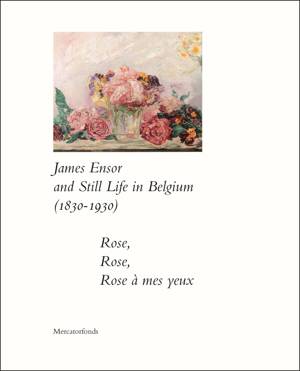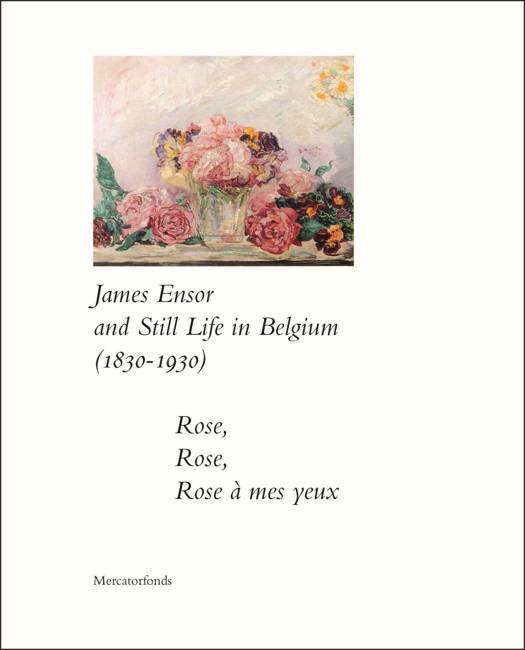
- Retrait gratuit dans votre magasin Club
- 7.000.000 titres dans notre catalogue
- Payer en toute sécurité
- Toujours un magasin près de chez vous
- Retrait gratuit dans votre magasin Club
- 7.000.0000 titres dans notre catalogue
- Payer en toute sécurité
- Toujours un magasin près de chez vous
James Ensor and Still Life in Belgium (1830-1930).
Rose, Rose, Rose à Mes yeux
Bart Verschaffel, Sabine Taevernier, Stefan Huygebaert
Livre broché | Anglais
45,00 €
+ 90 points
Description
This book offers a unique journey through the history of still life in Belgium in the 19th and early 20th centuries, with Ensor as guide. Still life played an important role within the oeuvre of Belgian expressionist and symbolist painter James Ensor (1860-1949). The quality and significance of his intriguing, complex still lifes become clear when placed within the broader development of the genre in Belgium between 1830 and 1930. The still life, which in the early 19th century had degenerated into a decorative genre, devoid of content and artistic importance, was artistically revalued in various ways throughout the nineteenth century: by monumentalising it, by animating the image with dolls and masks, through exoticism, or by making it part of an interior. In this, Ensor's work is the most inventive. Moreover, his long career added to Ensor's artistic impact on many artists who from 1880 onwards lapped towards modernism. His late still lifes - often transformations of early works - are little known and intriguing. Besides an overlook of this important part of Ensor's oeuvre, the book offers an overview of the 19th-century Belgian academic tradition of decorative painting, with intriguing work by lesser-known painters such as Jean Robie, Hubert Bellis, Frans Mortelmans and Henri De Braekeleer, and forgotten female artists such as Berthe Art and Alice Ronner. In the early 20th century, artists such as Louis Thevenet continued to develop the genre of still life in a traditional manner, while innovators such as the late James Ensor, Léon Spilliaert, Marthe Donas, Walter Vaes and Gustave Van de Woestyne created highly personal interpretations. This tradition of the still life painting ends with artists such as Jean Brusselmans and René Magritte, who deconstructed the pictorial space of the 'theatre of things'.
This book is published on the occasion of the first exhibition ever entirely devoted to James Ensor's still lifes at Mu.ZEE (Ostend).
- Offers a new and unique visual overview of still life production in Belgium between 1830 and 1930, with the distinguished Belgian painter James Ensor as the protagonist.
- The first ever to focus on James Ensor's still lifes, a key genre in the artist's oeuvre.
- Discusses many lesser-known Belgian artists with an intriguing artistic production, including several women painters.
- The book and accompanying exhibition focus on the artistic exploration and innovation of the still life's pictorial space, and is therefore also relevant to the study of still life in general.
- The Authors: Sabine Taevernier is a recognised expert on het oeuvre of James Ensor. Bart Verschaffel publishes extensively on visual art, particularly on 19th and 20th-century Belgian art, and is the author of several art-theoretical studies on the classical painting genres in general, and still life in particular.
This book is published on the occasion of the first exhibition ever entirely devoted to James Ensor's still lifes at Mu.ZEE (Ostend).
- Offers a new and unique visual overview of still life production in Belgium between 1830 and 1930, with the distinguished Belgian painter James Ensor as the protagonist.
- The first ever to focus on James Ensor's still lifes, a key genre in the artist's oeuvre.
- Discusses many lesser-known Belgian artists with an intriguing artistic production, including several women painters.
- The book and accompanying exhibition focus on the artistic exploration and innovation of the still life's pictorial space, and is therefore also relevant to the study of still life in general.
- The Authors: Sabine Taevernier is a recognised expert on het oeuvre of James Ensor. Bart Verschaffel publishes extensively on visual art, particularly on 19th and 20th-century Belgian art, and is the author of several art-theoretical studies on the classical painting genres in general, and still life in particular.
Spécifications
Parties prenantes
- Auteur(s) :
- Editeur:
Contenu
- Nombre de pages :
- 176
- Langue:
- Anglais
Caractéristiques
- EAN:
- 9789462303638
- Date de parution :
- 16-12-23
- Format:
- Livre broché
- Dimensions :
- 210 mm x 260 mm

Les avis
Nous publions uniquement les avis qui respectent les conditions requises. Consultez nos conditions pour les avis.






